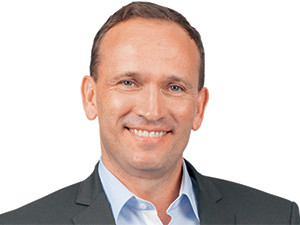
A lack of access to additional radio frequency spectrum is holding Vodacom back from providing more 4G coverage in rural areas. This according to group CTO, Andries Delport, who was speaking at a media roundtable in Johannesburg today.
Overall Vodacom's 3G network has 99.2% population coverage while on average 75.9% of South Africans have 4G coverage.
However Delport pointed out that the picture starts changing when you break this down between urban and rural areas. Vodacom's 4G coverage reaches around 91% of the population in metro areas but only 44% in rural areas.
"People ask me when will we run out of spectrum? I think we have run out of spectrum. Not from a capacity perspective but if you look at the statistic of 44% rural coverage on 4G, the reason why we cannot expand that is because we don't have spectrum.
"If we had more 800MHz spectrum, it would take some additional capex [capital expenditure], but virtually overnight we could have 4G coverage in rural areas," he said.
He explained that if you look at the way operators launched 4G in South Africa it was very different to how they did it in Europe, because of a lack of spectrum.
"Typically in Europe when you implement a new technology invariably you get additional spectrum. What we had to do to launch 4G was to refarm some of our spectrum, to take spectrum away from 2G on the 1800MHz band and we had to allocate that spectrum for 4G, which is not ideal.
"Because what you do is you have an entire 1800MHz band and you take all that traffic and you push it onto the 900MHz network and you are left with just a little bit of 1800MHz to carry 2G traffic and then you launch 4G on that 1800MHz network," he explained.
But he said that in some areas it's impossible to refarm any additional spectrum for 4G because the 2G traffic remains too high.
If spectrum is not available, operators' other option is to build additional base stations in rural areas which is a lot more costly. Delport said that using spectrum to add capacity to a network costs only around 10% to 15% of the cost of building a new base station.
"So the cost to communicate has to come down in South Africa and the way to bring that down is also to bring down the cost to deliver the service," he added.
Mobile operators and wireless service providers have, for years, been asking for more spectrum to be released by government. A planned spectrum auction, which would have given telecoms operators the opportunity to bid for spectrum in the highly sought-after 700MHz, 800MHz and 2.6GHz bands, was stopped last year by a squabble between the Department of Telecommunications and Postal Services (DTPS) and the Independent Communications Authority of SA (ICASA) .
The DTPS then published its National Integrated ICT Policy White Paper which proposed a shake-up of the previous policy framework for spectrum allocation in favour of establishing a wireless open access network (WOAN). The Council for Scientific and Industrial Research (CSIR) is busy conducting a high-level study on the WOAN's spectrum needs "with a view to license the remainder to the industry".
The last million
Delport said that 99.6% of the population of metro areas are able to access a speed of at least 1Mbps on the Vodacom network, and in rural areas it's about 95% of the population. However those falling below the 1Mbps threshold still add up to around 1 million South Africans.
"The problem is these are very low density areas. If you were to calculate the number of base stations you would need to build to cover the last million it would be between 1.5 million and 3 million base stations. So it will be quite expensive if you have to spend R1.8 million per base station - excluding transmission and other costs. But if you have better technologies you can provide coverage to some of those customers without building additional towers," he said.
Despite the costs Vodacom is not giving up on the last million.
"Government and the country require you to do it so you have to try to get there. Maybe you don't do it in one year or two years, it takes you some time, but you also have to think a little bit out of the box about how operators can make sure we get to the last million in coverage, how government can facilitate operators in terms of spectrum, and those type of things, to get to the last million.
"If I look at SA Connect it says that by 2020, 90% of the population must have 5Mbps coverage and by 2030, 100% must have 10Mbps. But there is some time to achieve this."
Vodacom's executive head of innovation, Jannie van Zyl, however reiterated that the challenges networks face in rural areas are substantial.
"When you look at the urban-rural split, 61% of South Africans live on 1.4% of land, inversely when you go into rural areas 39% of people live on over 98% of the land," he said.
"The lowest density we have in SA in terms of population coverage is four people per square kilometre. This is compared to the highest density of 700 people per square kilometre in urban areas. So when you have to build a network to cover both of these areas you can imagine how difficult it becomes. That is why we need lower frequency spectrum to give us massive footprints to provide more rural coverage," van Zyl said.
Share